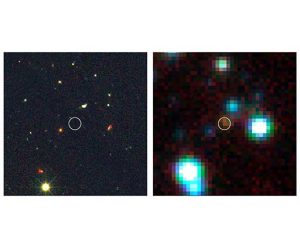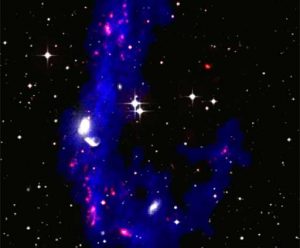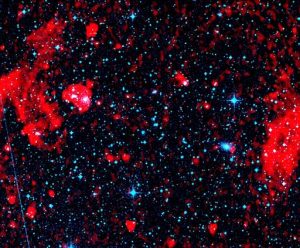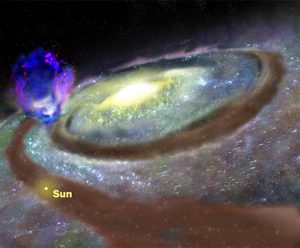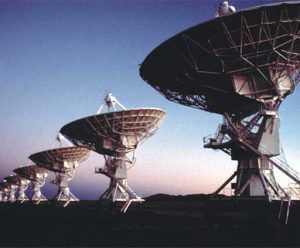A furious rate of star formation discovered in a distant galaxy shows that galaxies in the early Universe developed either much faster or in a different way from what astronomers have thought.
Missing Mass Found in Recycled Dwarf Galaxies
Astronomers studying dwarf galaxies formed from the debris of a collision of larger galaxies found the dwarfs much more massive than expected, and think the additional material is missing mass that theorists said should not be present in this kind of dwarf galaxy.
VLA Discovers Giant Rings Around Galaxy Cluster
Astronomers using the National Science Foundation’s Very Large Array radio telescope have discovered giant, ring-like structures around a cluster of galaxies.
Huge Superbubble of Gas Blowing Out of Milky Way
Astronomers using the National Science Foundation’s Green Bank Telescope have discovered a huge superbubble of hydrogen gas rising nearly 10,000 light-years above the plane of our Milky Way Galaxy.
Engine’s Running, But Where’s the Fuel?
Astronomers have found a relatively tiny galaxy whose black-hole-powered central engine is pouring out energy at a rate equal to that of much larger galaxies, and they’re wondering how it manages to do so.
Super-Sharp Radio ‘Vision’ Measures Galaxy’s Motion in Space
Astronomers using the National Science Foundation’s Very Long Baseline Array have measured the motion across the sky of a galaxy nearly two and a half million light-years from Earth.






